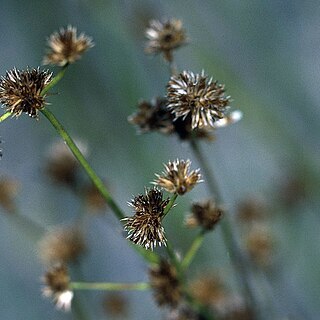Densely tufted perennial, strictly erect, stout. Stems 15-90 cm high, with several cauline leaves; internal septa present below inflorescence. Leaves terete, transversely-septate, septa usually evident externally. Inflorescence variable, (2)-4-12-(18) cm long. Flowers in large or small clusters of 5-20 at end of branches or in the forks. Tepals 3.5-4 mm long, very narrow, rigid, acuminate, outer very slightly < inner. Stamens 3, occasionally 4-6. Capsule 3-4.5 mm long, = or slightly > tepals, narrowed to short beak. Seeds with distinct white tails at each end.


